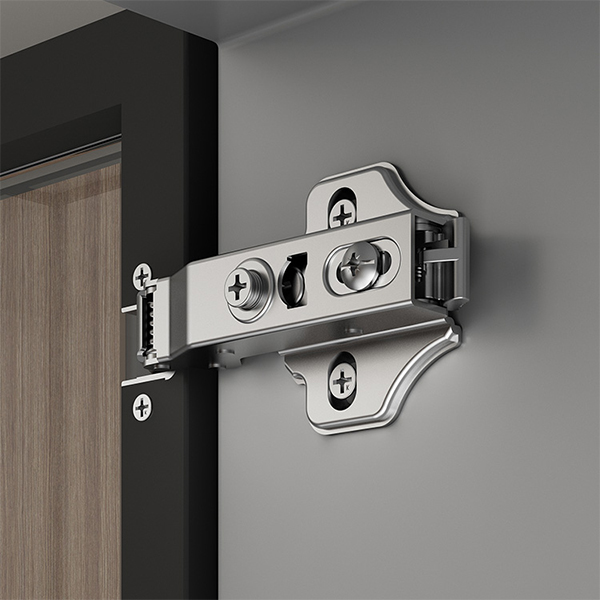In the field of modern interior design, simple lines and fresh aesthetics are what minimalism pursues. Cabinet hinges are often overlooked, but they play a crucial role in creating a refined appearance.
Especially frameless cabinet hinges, they have become the first choice for designers and homeowners who emphasize simplicity, practicality and clean aesthetics. So, what are the unique features of these hinges? Why are they ideal choices for minimalist design?
What Are Frameless Cabinet Hinges?
Frameless cabinet hinges are specially designed for cabinets without a front frame. Frameless cabinets, often referred to as European-style cabinets, feature a simple box structure with door panels directly connected to the side panels of the cabinet. Due to this design, the hinge needs to provide sufficient support and precise alignment without relying on the structure of the front frame.
Unlike traditional door frame hinges (which need to be installed on both the door and the door frame), frameless cabinet hinges are only installed on the inner walls of the cabinet body. Most frameless hinges are concealed hinges, which means that when the cabinet door is closed, the hinges are completely hidden. This alone is sufficient to create a more concise and modern appearance that blends perfectly with the minimalist interior design.

How Frameless Hinges Differ from Traditional Hinges
The most obvious difference between frameless hinges and traditional hinges lies in their installation methods and visibility. Traditional cabinets usually use hinges or semi-concealed hinges that can be seen from the outside. In contrast, frameless hinges are completely hidden after installation, maintaining the smoothness of the overall visual effect of the cabinet.
Another major difference is adjustability. Frameless cabinet hinges usually offer three-way adjustment - up and down, left and right, and front and back. This precision can fine-tune the position of the door, ensuring even door gaps and smooth opening and closing. In contrast, traditional hinges usually require manual adjustment of position or shims, making the adjustment more laborious.
From a functional perspective, the design of frameless cabinet hinges also fully takes into account modern performance. Many frameless hinges are equipped with slow-closing devices that can prevent the door from slamming shut, thereby extending the service life of the hinges and cabinet doors.
Why Frameless Hinges Are Perfect for Minimalist Designs
Minimalism advocates simple and clear geometric shapes and understated design elements, and frameless cabinet door hinges perfectly align with these principles. Because the hinges are hidden inside the cabinet doors, they can present a smooth and seamless appearance. Frameless cabinet hinges also conform to the concept of functional minimalism. They offer smooth and precise movements, allowing you to open and close cabinet doors with ease.
Another reason why frameless hinges are the ideal choice for minimalist spaces is their versatility. They are suitable for various cabinet styles, enabling designers to maintain visual consistency in kitchens, bathrooms and living spaces.
Conclusion
Frameless cabinet hinges perfectly combine hidden functions with precise engineering, embodying the minimalist concept centered on the beauty of simplicity. Whether you are designing a modern kitchen, bathroom cabinets, or custom wardrobes, frameless hinges can help you create a simple and modern aesthetic while ensuring durability, smooth operation, and reliable performance.